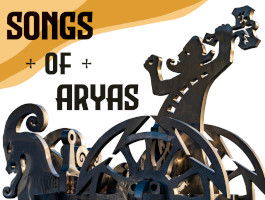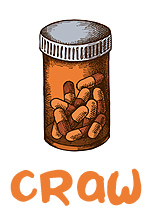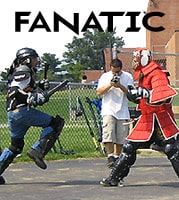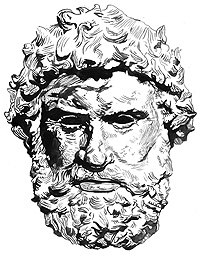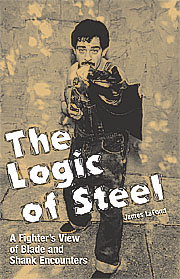“When young Dawn with her rose-red fingers shown once more…”
-The Rage of Achilles, 569
The Iliad, story of the Trojan War fought some 500 years before the composition of the epic by Homer [who may well have not written it down, but had it memorized by his understudies as he had] marked the beginning of the ‘Unbroken’ Olympic tradition. This is to say from the time of Homer on, with the First Olympiad in 776 B.C. marking roughly his year of birth, the Greek-speaking peoples saw themselves as having a common cultural bond or ethos, and acknowledged a month long Olympic truce every fourth year. The leading citizens of roughly 150 communities—most lost to history—sent their leading men to Elis every four years to contest with each other in a formal agreement that they held the same masculine ideals, regarded the same great gods with awe, and abided by the same codes of conduct.
Overall the various books of the Iliad are chock full of observances as to the use and effect of the various weapons. However certain books give in depth cultural insights.
Before writing any fiction set in ancient Greece you must simply read the entire Iliad. From the perspective of setting development I regard the rereading and interpretation of the following books to be important for inspiration in the following aspects of story development.
Book 1: The Rage of Achilles
“Rage—Goddess, sing the rage of Peleus’ son Achilles,
Murderous, doomed, that cost the Achaaeans countless losses, hurling down to the House of Death so many sturdy souls,
Great fighters’ souls, but made their bodies carrion…”
For understanding the psychological makeup of ancient Hellenic war leaders, petty kings, and tyrants, this offers a searing profile of what kind of mindset possessed the men of action who managed to affect the course of events in a fractious society that was quite literally based on proficiency with a certain weapons set. The warrior who dominates this battle space is not the slick evasive highflying combatant that stems from 19th Century fencing in the West and Hong Kong Kung Fu, but strong, aggressive, fast charging types patterned more on an NFL linebacker than any type of duelist.
A reading of the first four lines of the epic establishes the following values:
1. The potency of rage in heavy shield combat, the importance of a warrior’s father expressing the high value of legitimate birth and patrimony
2. That this type of war is very costly and hurtful to the community
3. That supernatural forces—at least in the form of sorrowful ghosts—are unleashed by war, reflected in the fact that Hellas was literally knit together by a collection of ghost houses [hero temples]
4. That even great fighters perish in droves in this form of lethal spear-skewering combat, and that the dashed dreams of men ultimately become the food for scavengers
The Rage of Achilles speaks to the plight of a land at a certain technology level that sits at the rocky terminus of an invasion path. The Hellenes were literally the children of a hundred invading armies crowded into the broken land that had dashed the hopes of many a nomad people—and would again, and again.
Book 18: The Shield of Achilles, Lines 480-719
“And first Hephaestus [Vulcan to the Romans, crippled smith of the gods] makes a great and massive shield,
blazoning well-wrought emblems all across its surface,
Raising a rim around it, glittering, triple-ply
with a silver shield-strap run from edge to edge
and five layers of metal to build the shield itself,
and across its vast expanse with all the craft and cunning
the god creates a world of gorgeous immortal work.”
“There he made the earth and there the sky and sea…”
Homer goes on to describe the ideal Hellenic world under heaven, in which lesser men are placed beneath greater men, and the works and days of Hesoid seem to unfold before the mind’s eye. The shield itself does not represent a normal shield that would equip a fighting man, but a ceremonial talismanic weapon. The passage leading up to these lines 558-65 describe an impressive armory and will be of use to the writer, as scaled down versions might be inserted in the mundane setting. Where this book is most useful to the author is the picture of how Hellenic society of Homer’s time—which remained the ideal through the period under discussion—should be ordered in the eyes of the ruling class. There would, of course, be many exceptions. But The Shield of Achilles sets the bar for community standards as propaganda for the ruling class.
Homer slyly insets a subversive anti-war anti-hierarchal message throughout via the person of Achilles. However, the bulk of the Iliad is about how men should behave according to the will of their masters and under the eyes of Heaven.
Book 21: Achilles Fights the River
“He was pruning a young fig with his sharp bronze hook,
cutting green branches to bend for chariot-rails
when a sudden blow came down on him in the dark—
the grim marauder Achilles…”
Achilles Fights the River is the most psychotic book of the Iliad, with the sacred river finally rising up in protest against Achilles who is choking its waters with the bodies of the dead. Achilles is a sketch of war gone too far—a prediction of an Alexander, a Napoleon—as well as a look at how the landscape was held sacred. The Hellenic view of rivers was more animistic than the Native American ideal, with some rivers being credited with impregnating the mothers with hero fetuses.
If you wish to infuse a sacral element and its apostate counterpart into your story, read Achilles Fights the River for inspiration.
Book 23: Funeral Games for Patroclus
“…friends to the death!
We must not loose our teams from the war-cars yet.
All in battle-order drive them past Patroclus—
A cortege will mourn the man with teams and chariots.
These are the solemn honors due the dead. And then,
after we’ve eased our hearts with tears and dirge, we free the teams and all take u super here.”
“All as one
the armies cried out in sorrow, and Achilles led the chant.”
What follows are the games, more accurately translated as ‘contests’ but usually rendered as games after the Latin interpretation. Interactions between rival chiefs and their commander abound, as well as boasts, back stories regarding individual heroes’ previous smaller scale adventures, and of course details of the sacred ‘agonies’ in which men engaged in to honor the dead and the divine.
Book 24: Achilles and Priam
The first portion of final book details what lengths the spiteful gods will go to make Man miserable! Some of your characters will hold this view of the divine—if not all to a certain extent. It further demonstrates the belief that each person of importance, or small grouping of people, could expect succor or respite from one, perhaps a few, of the more minor aspects of the divine, or awful unknown. Do read carefully here if you would sketch an authentic priestly or shamanic [the seer in Book 1 or the various oracles] figure for your story.
Then the story reaches its apogee—not with a final battle followed by a riding into a blissful sunset to enjoy a life of comfort, ease and plenty, as depicted in the modern and postmodern story, but in a deeper darker tone impinged upon by the gray noise of the world. If your goal is truly to craft an authentic picture of the ancient Hellenic worldview, leave the happy ending aside, and realize that the modern novel or movie is the most humanly inauthentic, unrealistic, spiritually strip-mined form of literature there is. If you wish to portray these men and women that laid the foundations of the Western Experience as they were, in the light they saw themselves beneath Heaven, then read Achilles and Priam.
The second portion of this book shows the patriarchal nature of ancient Hellenic society in the person of old Priam whipping his sons and bossing them about, as he obeyed his divine god-sent vision and scorned their objections about his safety.
The book reaches an interesting point when Priam attempts to bribe one of Achilles’ men for the body of his senior son Hector. An examination of the ethical landscape and honor based culture is well wrought here. This was very important.
In the apex act of the Iliad Priam and Achilles negotiate for the body of Hector, the old man’s son and Achilles slain foe, and come to an understanding that sometimes men must stand together despite being enemies. This remains a thread in Hellenic literature and history and reflects the fractured geography of Hellas and shared culture of its people. The point at which Priam argues to Achilles that he should return to his father’s homeland to protect his interests is but one of many sharp points made throughout the Iliad that this society is tied to small closely held natural resources and that adventurous undertakings can be disastrous to the homeland left unprotected by its best men.
The drama continues into a discussion of the importance due to the rites honoring the dead, a reminder that despite our beliefs that ancient paganism was all about orgies and child like fantasies, that it was very much concerned with the passing of loved ones into a lonely unknown that was not marked as the blissful reward for earthly obedience that the Christian afterlife promises.
The ancient Hellenic view on life was not a lineal ascent to a pinnacle of plenty crowned by a retirement of fading indolent ease and dignified decay, but a striving life crowned by an immortalizing end, an end that would help the community continue through example, a community that will seek to remember its dead rather than forget,
“They streamed out of the gates to meet Priam
Bringing in the body of the dead…”
“…At last,
When young Dawn with her rose-red fingers shone once more,
the people massed around illustrious Hector’s pyre…”
“And so the Trojans buried Hector breaker of horses.”


